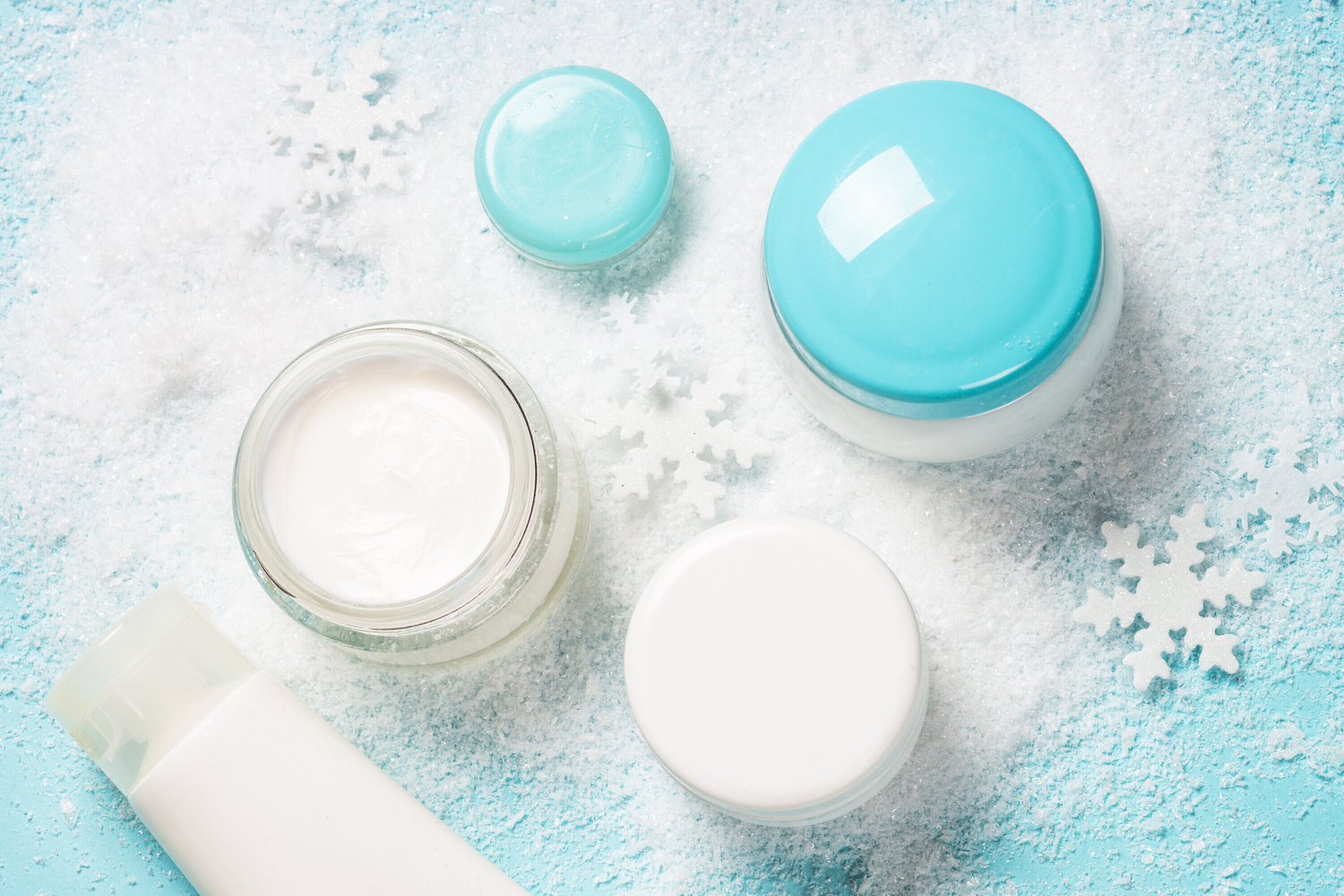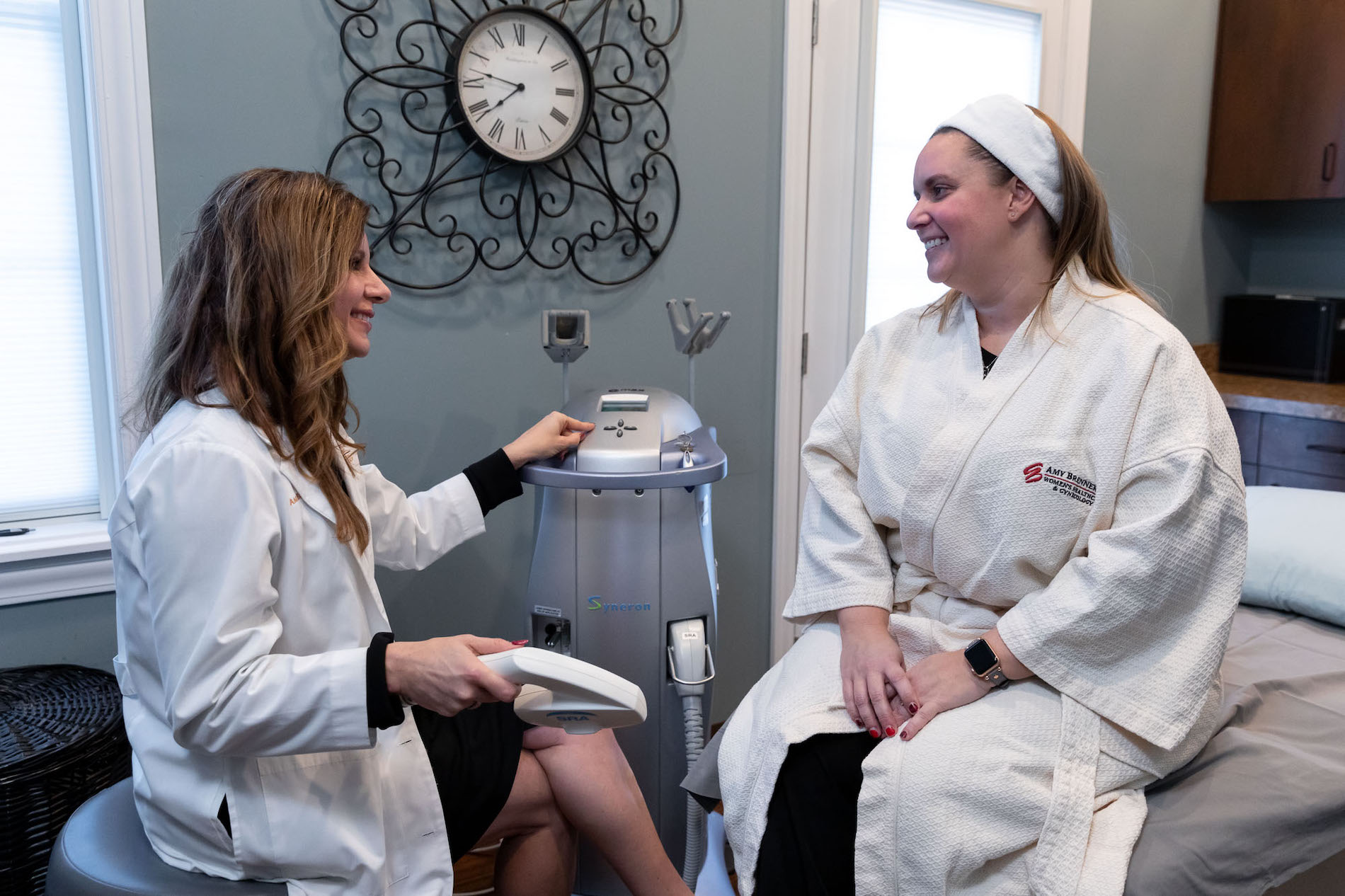Gone are the days of falling leaves and pumpkin spice; now is the time for falling snow and peppermint. And do you know what that means? You guessed it. Now more than ever, you should focus on your winter skin care to ensure your radiant complexion stays bright and glowy despite the drier air.
If you’re not sure where to start, our skincare experts at Amy Brenner, MD & Associates have got you covered with the ins and outs of all things skin. Whether you need help with products, building a regime, or finding the right aesthetic treatment for winter, we have outlined an easy-to-follow guide that men and women alike can use.
Just keep reading to learn more.
Why is my skin so dry in the winter?
If you’re using the same routine throughout the year, your skin could be missing out. Season changes often have a huge impact on how the skin looks, feels, and reacts to certain products and procedures.
While we could delve into the intricacies of weather, we’ll get straight to the point. Here’s one thing you should know: humidity levels play a major role in seasonal skin changes. There’s a reason many people face more oily skin in the summer and drier skin in the winter.
During the winter, humidity levels are lower than during the summer or even fall months in some cases. When the air gets dry, it draws moisture anywhere it can. Your skin cells are full of water, which the air loves. As a result, it pulls that water from your skin, leaving your face and body feeling tight and drier than usual. Dry skin can even make fine lines and wrinkles more prominent, and no one wants that.
That’s why it’s crucial to consider seasonal changes as you build your skincare routine and pick aesthetic procedures to enhance your overall complexion. Without adapting your regime for winter, you may notice your skin appearing more dull and tired-looking. Fortunately, making simple changes doesn’t require a complete overhaul.
First thing’s first: Listen to your skin.

Winter skin care is all about listening to your skin each day. Trust us—your skin will let you know if you need to switch things up a bit. When you pay attention to your skin’s cues, it helps you figure out what you may need to implement into (or take away from) your routine to rebalance everything.
We definitely understand it can be hard to match signs and changes to what you’re supposed to do. While not everything with work for everyone, here are three common skin changes you can look for and solutions that could help.
(1) Flakiness and dry patches: Most people understand flakiness and dry patches typically mean the skin needs more moisture. Your skin produces oils to not only moisturize, but also protect itself. However, when that oil begins drying out, water levels in your skin cells plummet. As a result, the top layer of your skin peels and can appear patchy.
The solution: Typically when you add a great moisturizer and hydrating serums to your daily skincare routine, flaky, patchy skin can resolve itself (we’ll go more in depth on moisture in the next section).
(2) Extra oil production: Yes, it is totally possible to suddenly have an influx of oil during the winter. Some people take extra oil as a sign to use harsher cleansers to dry out the skin and eliminate oil. It can be especially frustrating if the jump in oil production leads to winter acne, and that could lead to scavenging for acne products you may not need.
The solution: We’re going to let you in on a little secret. If your skin isn’t usually super oily during other seasons, dryness may be the culprit… again. We know that seems a little counterintuitive, but your skin is all about protection. Whenever it needs more moisture, it hikes oil production to compensate.
That means if you’re using a moisturizer that’s too light in the winter, you may notice oil buildup during the day. The cycle only continues if you keep rewashing your face or applying drying products. We highly recommend adding more moisture (even if you don’t want to). In many cases when your skin realizes it’s getting what it needs, it cuts down oil production.
(3) Excess redness: Most people will experience rosy cheeks in the winter; that’s completely normal. In those cases, once you get back inside, that redness fades. However, if you notice redness that lingers no matter where you are, that may point toward skin irritation. Harsh products that you may have used in the summer/fall may not mix well with dry winter air.
The solution: Gradually remove products to pinpoint where the problem lies. Especially hone in on products that include things such as:
-
- Large “exfoliating” beads
- Alcohol
- Parabens
- Added fragrance
- Sulfates
When you remove those products one-by-one, it may be less of a shock on the skin, and you may notice your skin slowly clearing up and returning to its natural tone.
Moisturize, Moisturize, Moisturize… It’s that important.

Sufficient moisturization is key for winter skin care. Even if your skin is on the oiler side, you may need to add a slightly heavier moisturizer (but not too heavy!) to keep your skin balanced rather than producing more oil. At the end of the day, you want to fight against the lack of humidity to ensure your skin stays in the best condition possible.
There are a lot of products that claim to hydrate your skin, but if you take a closer look at the ingredient label, there are a lot of moisturizing imposters. Here’s what we mean: some ingredients may feel like they are hydrating your skin, when in reality, they’re either just sitting on top of your face doing absolutely nothing or actually harming your skin rather than protecting it.
When choosing skincare products, try to avoid:
Silicones: Some skincare products add silicones to their moisturizers because they’re cheaper than higher-quality ingredients, yet they make the skin feel soft and supple after application. On the surface, this may seem like a great deal, but it’s not. Silicones don’t necessarily add moisture, they lock in moisture… and dirt, and oil, and dead cells, and bacteria. They can even affect the skin’s ability to naturally shed skin cells. Basically, they initially give the appearance of smoother skin, but in the long run, they’re doing more harm than good.
Learn more about the problem with silicones in skincare products. →
Olive Oil: Olive oil typically isn’t an issue in store-bought products (though that doesn’t mean it can never happen), but it tends to be a go-to for a lot of DIY moisturizers and masks. Again, don’t let the world “oil” confuse you. Olive oil is an oleic acid, which is known to create tiny holes in the skin and damage your skin barrier (almond oil is another common oleic ingredient to avoid).
Mineral oil: It has the word “oil” in it, so it must be moisturizing, right? Yes, but with a caveat. Mineral oil is classified as a hydrocarbon, meaning it only contains hydrogen and carbon. Another example would be petroleum. Many products add mineral oil because of its hydrating capabilities by locking in moisture to heal the skin. While this can be great for cuts, with regular use, mineral oil is known to clog pores. So instead of truly getting the smooth, moisturized skin you’re after, you may end up with unwanted breakouts.
PUFA Oils: Polyunsaturated fat oils are high in polyunsaturated fat. This kind of fat is great for your diet, but not so great for your skin. It’s not necessarily because they won’t hydrate your skin; it’s because polyunsaturated fat is unstable and will oxidate fairly quickly. The oxidation process releases free radicals, and once applied to your skin, oxidized oils can damage your skin, leading to premature aging.
Don’t worry. We won’t leave you there. There are tons of amazing ingredients that truly replenish and hydrate your skin without causing more damage. Some of our favorites include:
Hyaluronic acid: There’s nothing quite like the skin-plumping effects of hyaluronic acid (HA). HA has the capability to hold 1,000x its weight in water, which can help take off years from your appearance.
Glycerin: Glycerin is another humectant like HA, meaning it attracts and retains water. It also helps strengthen the skin’s moisture barrier and protects against drying environmental forces.
Occlusives: Ingredients like shea butter, lanolin, and jojoba oil are great for sealing moisture into the skin. Keep in mind that these ingredients don’t actually provide additional moisture. Instead, they make sure that the moisture you do add doesn’t get pulled out.
Ceramides: Oftentimes, a damaged skin barrier is the cause of dry skin, which is common after summer wear and tear. Ceramides are a class of fatty acids that help repair your skin barrier to help your skin naturally retain more moisture.
When in doubt, lean toward medical-grade skincare products rather than over-the-counter. Medical-grade products are infused with the best ingredients scientifically formulated to achieve the results you’re after. At Amy Brenner, MD & Associates, our skincare specialists love SkinMedica products.
Pamper your skin with the perfect wintertime aesthetic treatment

There are many aesthetic procedures and treatments that will take your skincare routine to the next level. But oftentimes, we recommend a CO2RE laser skin resurfacing treatment as the perfect winter companion. Why? Well, the treatment typically makes your skin more sensitive to sunlight, and if you want to spend your summer hanging out outside, it may put a damper on your plans. However, the winter is the perfect time to reverse signs of aging and rejuvenate your skin without worrying about the sun as much (you still want to wear SPF!).
CO2 laser skin resurfacing is a state-of-the-art skincare procedure that treats wrinkles, aging skin, fine lines, acne scars, and large pores. One of the biggest benefits of CO2RE is it works great for people who want to get the most results after only one treatment. This innovative laser technique minutely damages the skin, just enough to force the skin into it’s natural healing process. This leads to increased collagen and elastin production, making your skin appear younger and more firm.
You can always combine your CO2RE treatment with other aesthetic procedures, including:
If you’re ever unsure of which procedure will work best for you, contact our team, and we will be happy to help.
Amy Brenner, MD & Associates can help you upgrade your winter skin care.
Let our skin experts help create a customized routine and give you the skin you’ve always wanted. We will work with you to understand your unique skin conditions and concerns to get you one step closer to reaching your goals. As a medspa and medical practice, we are uniquely equipped with the ability to not only treat your skin, but also help you maintain your overall health.
We’re here to offer a warm, friendly environment while providing the highest quality treatments and procedures to help you look great and feel great.
Get started today by using our virtual consultation tool or scheduling an appointment.



